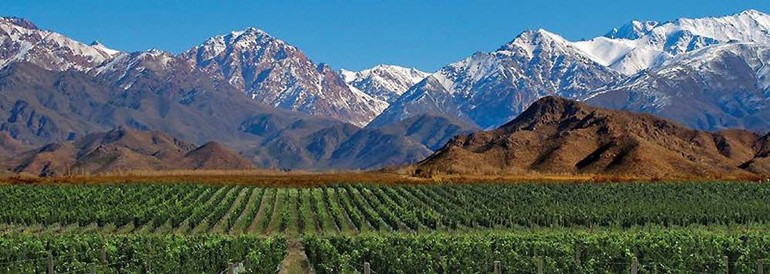Everything you need to know about wine from The Americas
Written by Monica Allan
The Americas encompasses huge land masses with South America being the world's second most important wine producing continent after Europe with quality rapidly improving. The Americas have the advantage of not being bound by tradition like Europe and can embrace innovation, technology, and consumer needs.
The term ‘The Americas’ includes the wines of North America, Central America, and South America. Whilst the oldest winery in The Americas may be in Mexico, production, both in terms of quality and quantity, has been historically dominated by North America and South America. North America has traditionally been perceived as excelling in quality, while South America has been associated with quantity. However, this perception is rapidly evolving, and both regions of The Americas are now witnessing an exciting shift. Premium and intriguing wines are abounding from both North and South America, challenging and reshaping the traditional notions of each region’s contributions to the world of wine.
Napa and beyond: wines from the USA
Let’s start with the USA. Whilst wine is produced in all 50 states, California stands out as the dominant force in both the quality and quantity of US wine production, accounting for over 90% of the country’s total output. Notably, California is home to some of the largest wine-producing companies, such as E & J Gallo, responsible for over 3% of the world's entire annual supply. Although the UK market may be a huge fan of California’s pink White Zinfandel, Chardonnay takes the lead as the most planted grape, followed by Sauvignon Blanc, Cabernet Sauvignon, and Pinot Noir.

The diverse, cooler microclimates spanning Sonoma Coast, Napa, Central Coast, and Lodi contribute to the production of wines with ripe, concentrated fruit, mouth-watering freshness, and fine, elegant ripe tannins. The diversity ensures a Californian wine style for every palate, with wines that are not only delicious when young but also age-worthy Zinfandel, California’s signature grape, distinguishes itself when grown at higher altitudes and via old vines, offering a unique point of difference. Whilst Zinfandel wines are often high in alcohol, a well-balanced profile with fruit characteristics and integrated oak makes them an ideal premium choice for customers looking to trade up and drink less. Moving further north, the Pacific Northwest is renowned for producing premium, medium-bodied Pinot Noir and concentrated Rhone varietals. Although the region is less reliable than California in terms of ripening, it fosters innovation and experimentation both in winemaking and grape growing. Across the border in Canada, the trademark ice wines made from frost-hardy Riesling and Vidal grapes showcase purity of fruit, an acidic backbone, and luscious sweetness, making them distinctive and sought after.
More than Malbec: South American Wines
Heading south of the equator, the growth of high-quality premium South American wines has experienced a rapid surge. Argentine and Chile stand at the forefront of production, challenging the preconceived notion that the region is solely synonymous inexpensive bulk Merlot and Malbec. Argentina with its distinctive destination style and high-altitude single vineyards, is not only excelling in the production of concentrated Malbec and Cabernet blends but is also making its mark with premium Burgundian-style Chardonnay and unique styles of full-bodied Semillon. The San Juan region produces spicy Syrah, while the extreme grape growing conditions in Patagonia boast the world’s most southerly vineyards.

Chile, boasting Phylloxera-free vines and old vine Carignan, has fostered a community of artisan winemakers who produce small-batch boutique wines according to their own rules. From cool climate sites to the arid Coquimbo region, and the renowned regions of where grapes are grown in desert like Maipo and Aconcagua, Chile offers a spectrum of wines that rival some of the finest of Europe. This dynamic landscape seamlessly blends modern winemaking techniques with a commitment to the purity of fruit, with the classic Bordeaux influences of Cabernet Sauvignon and Merlot, with the added unique twist of Carmenere thrown in for good measure. The result is a collection of wines that reflect Chile’s distinct terroir and innovative spirit.
Fly over to Uruguay, and you’ll find that premium wines made from Tannat have steadily grown in popularity. Then, in Bolivia and Peru, whilst modern grape growing and wine production is small, investment and commitment are reliably increasing.
The future of wine from The Americas
Looking to the future, the emphasis on sustainability and low alcohol wines is particularly well-suited to The Americas. Despite the challenges posed by climate change and rising vineyard temperatures, the region’s commitment to experimentation and adaption has been paramount to its success. This dedication ensures the increasing dominance of wines in export markets.
